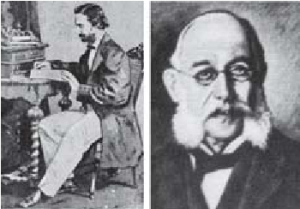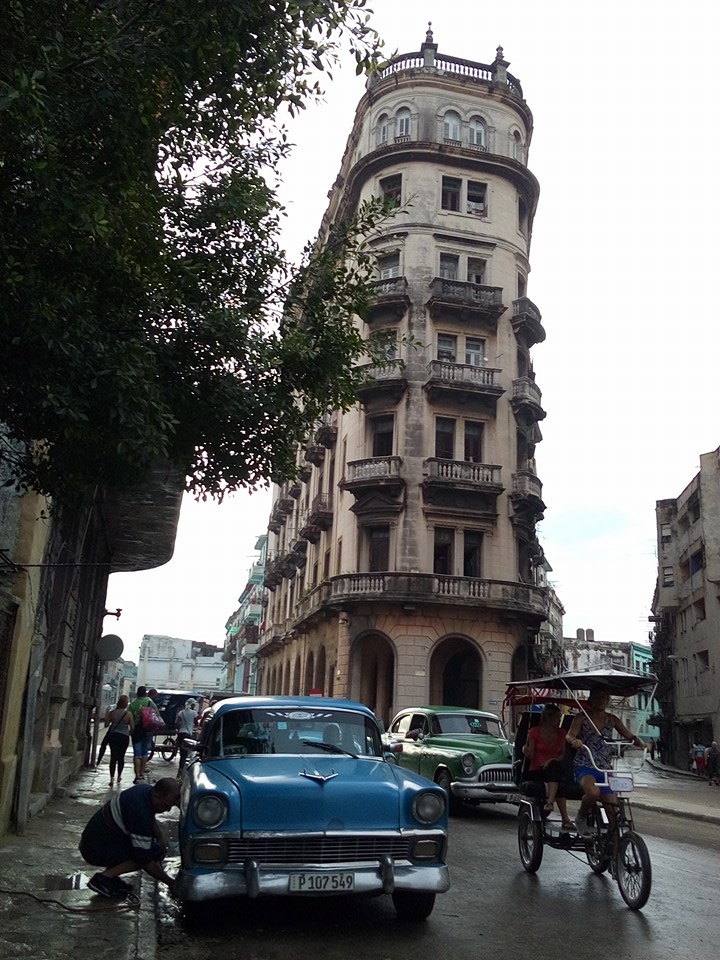THE DOCTOR OF THE MOSQUITOES. CARLOS J. FINLAY.
Carlos J. Finlay was born in the city of Camagüey, the December 3, 1833, a date that was chosen for the celebration of the Day of Latin American Medicine. He became interested in the study of yellow fever in 1870. Then the disease, which is endemic in the Americas, was already considered a kind of necessary evil and against it the strangest measures were tested.
Two hypotheses prevail then. One said that was transmitted from sick to healthy and that where a case is presented, they soon appear many more. The other argued that in the case of this disease, not healthy people will use contracted even though the clothes of the sick, they were in contact with him, breathed their breaths or were affected in some way with the products of the disease.
As the two conjectures were based on objective and factual, and seemed to be right, Finlay decided on another way and developed the concept of the metaxénica transmission of infectious diseases. The revelation of this new and distinct disease transmission mode resolved large and complex epidemiological problems.
Struggle for Recognition.
.. During the first American intervention in Cuba, the US government pressured its military doctors stationed in the island that they should seek a solution to the problem of yellow fever. Powerless over the disease, they decided to test the theory of Finlay. A late summer of 1900 Hard Reed, Carroll and Lazear Cuban doctors visited their colleague in his home on Paseo del Prado. Finlay ran at that time with another illustrious Cuban doctor, Dr. Diaz Albertini. The Americans asked Finlay details of their research with the promise to check them in practice. Finlay, with extraordinary generosity, made available to the visitors the result of 30 years of work in the field and presented them in a porcelain soap dish, egg of an infected mosquito.
In Marianao American medical commission undertook his experiments. Only he began to take seriously the theory of Finlay when two of its members were infected with infected mosquitoes. Carroll survived; Lazear died: he had consciously left itching. Americans alone outstripped Finlay in determining the viral nature of the disease.
From the first contact with Finlay Americans he began to take shape infamy, as Reed, who served as head of the group, never was in favor of recognizing the paternity of the discovery Cuban if his theory were to be corroborated. He wanted to merit only for himself and not delayed award the contract.
That was due in a very precise guidance he received from Washington. In the eyes of the world the US government wanted to pass his intervention in Cuba as a humanitarian and civilizing work, not military. Nothing is better for that purpose than to believe that the reorganization of the country to combat the mosquito and the eradication of yellow fever were only the culmination of his “humanitarian” and “civilizing” sleeplessness paid.
Glory
Finlay reacted vigorously to the usurpation, and the most distinguished professionals seconded his time and before refused to believe in his approach. Soon the glory of the medical exceeded our territorial limits, and the universal recognition came the Cuban wise. Philadelphia University, where he studied, awarded him honorary, doctorate in Law. The School of Tropical Medicine, Liverpool, Mary Kingsley Medal, and the French government awarded him the insignia of Officer of the Legion of Honor.
When was convened in February 1901 in Havana Pan American Congress of Medicine III, great excitement reigned among the attendees. At its would meet face to face Finlay and Reed. The Cuban headed the section of General Medicine and would read a report on progress against spread of yellow fever.
When it came his turn to present his speech, Rodriguez Exposito says his biographer, “received a standing ovation venerable, calm and dignified figure of the noble old man. Doctors across the continent there represented thereby yielded a moving and eloquent homage to the discoverer of the transmitting agent of yellow fever. ”
The next day, Reed addressed the Congress. He also read a report on yellow fever, but the Finlay name is not mentioned in its pages.
By then they had initiated plans for sanitation in Havana and surrounding areas, and also the rest of the island. Areas for house mosquitoes were petrolizaron and soon became apparent that disappeared cases of death from the disease. Between September 1901 and July 1902 a single case was reported. The news spread quickly throughout the world. The implementation of the recommendations enabled the Cuban medical sanitation, thus saving human lives, vast areas in Brazil, the southern United States and countries in Africa and Asia. Thus the construction of the Panama Canal was completed.
To commemorate the 182 anniversary of the birth of Carlos J. Finlay, worth remembering the figure of the illustrious scientist whose prowess is beyond the scope of the time he lived at the time and Medicine sat on a universal scale, the basis for Search and solve the health care problems.
Carlos Finlay died in Havana, at his residence in G Street between 15th and 17th, Vedado, the 20 August 1915.
CiroBianchiRoss / Juv.RebeldeLecturas / InternetPhotos / Extracts.
The Cuban History, Hollywood.
Arnoldo Varona, Editor.
EL DOCTOR DE LOS MOSQUITOS. CARLOS J. FINLAY.
Carlos J. Finlay nació en la ciudad de Camagüey, el 3 de diciembre de 1833, fecha que se escogió para la celebración del Día de la Medicina Latinoamericana. Comenzó a interesarse en los estudios sobre la fiebre amarilla en 1870. Entonces la enfermedad, endémica del continente americano, era considerada ya una especie de mal inevitable y contra ella se ensayaban las medidas más peregrinas.
Dos hipótesis prevalecían entonces. Una decía que se transmitía de enfermos a sanos y que donde se presentaba un caso, no tardaban en aparecer muchos más. La otra planteaba que en el caso de este padecimiento, las personas sanas no lo contraían aun cuando usaran las ropas del enfermo, estuvieran en contacto con él, respiraran sus hálitos o fueran afectados de algún modo con los productos de la enfermedad.
Como las dos conjeturas se basaban en hechos objetivos y reales, y parecían estar en lo cierto, Finlay se decidió por otro camino y elaboró el concepto de la transmisión metaxénica de las enfermedades infecto-contagiosas. La revelación de este modo nuevo y distinto de la transmisión de enfermedades ha resuelto grandes y complejos problemas epidemiológicos.
Lucha por el Reconocimiento.
.. Durante la primera intervención norteamericana en Cuba, el Gobierno de Estados Unidos presionó a sus médicos militares destacados en la Isla para que buscasen una solución al problema de la fiebre amarilla. Impotentes ante la enfermedad, decidieron ensayar la teoría de Finlay. Una tarde del duro verano de 1900 los doctores Reed, Carroll y Lazear visitaron a su colega cubano en su casa del Paseo del Prado. Discurría Finlay en aquel momento con otro ilustre médico cubano, el doctor Díaz Albertini. Los norteamericanos pidieron a Finlay detalles de sus investigaciones con la promesa de comprobarlas en la práctica. Finlay, con una generosidad extraordinaria, puso a disposición de los visitantes el resultado de sus 30 años de trabajo en el tema y les hizo entrega, en una jabonera de porcelana, de huevos de un mosquito infectado.
En Marianao acometió la comisión médica norteamericana sus experimentos. Solo comenzó a tomar en serio la teoría de Finlay cuando dos de sus miembros se contagiaron con los moquitos infectados. Carroll logró sobrevivir; Lazear falleció: se había dejado picar conscientemente. Los norteamericanos solo aventajaron a Finlay en la determinación de la naturaleza viral de la enfermedad.
Desde los primeros contactos de los norteamericanos con Finlay comenzó a gestarse la infamia, pues Reed, quien fungía como jefe del grupo, nunca se mostró partidario de reconocer al cubano la paternidad del descubrimiento en caso de que llegase a corroborarse su teoría. Quería el mérito solo para sí y no demoró en adjudicárselo.
Obedecía en eso a orientaciones muy precisas que recibió de Washington. Ante los ojos del mundo entero el Gobierno de Estados Unidos quería hacer pasar su intervención en Cuba como una obra humanitaria y civilizadora, no militar. Nada se prestaba mejor a ese propósito que hacer creer que el saneamiento del país con el combate del mosquito y la erradicación de la fiebre amarilla eran colofón únicamente de sus «humanitarios» y «civilizadores» desvelos.
Gloria
Finlay reaccionó vigorosamente ante la usurpación, y los más distinguidos profesionales de su tiempo lo secundaron, así como antes se negaron a creer en sus planteamientos. Pronto la gloria del médico rebasó nuestros límites territoriales, y el reconocimiento universal llegó al sabio cubano. La Universidad de Filadelfia, donde cursó estudios, le otorgó, ad honorem, el doctorado en Leyes. La Escuela de Medicina Tropical de Liverpool, la Medalla Mary Kingsley, y el Gobierno francés lo condecoró con la insignia de Oficial de la Legión de Honor.
Cuando en febrero de 1901 se convocó en La Habana el III Congreso Panamericano de Medicina, una gran expectación reinaba entre los asistentes. En sus sesiones volverían a encontrarse cara a cara Finlay y Reed. El cubano presidía la sección de Medicina General y daría lectura a un informe sobre los adelantos contra la propagación de la fiebre amarilla.
Cuando le tocó el turno para dar a conocer su ponencia, dice su biógrafo Rodríguez Expósito, «una ovación cerrada recibió la figura venerable, serena y digna del noble anciano. Los médicos de todo el continente allí representados rendían de ese modo un emotivo y elocuente homenaje al descubridor del agente transmisor de la fiebre amarilla».
Al día siguiente, Reed se dirigió al Congreso. Leyó asimismo un informe sobre la fiebre amarilla, pero el nombre de Finlay no se menciona en sus páginas.
Ya para entonces se habían iniciado los planes para la higienización de La Habana y sus alrededores, y también del resto de la Isla. Se petrolizaron áreas susceptibles de alojar mosquitos y pronto se evidenció que desaparecían los casos de muerte a causa de la enfermedad. Entre septiembre de 1901 y julio de 1902 no se reportó un solo caso. La noticia corrió rápidamente por el mundo. La aplicación de las recomendaciones del médico cubano posibilitó el saneamiento, con el ahorro consiguiente de vidas humanas, de extensas regiones en Brasil, el sur de Estados Unidos y en países de África y Asia. Así, se concluyó la construcción del canal de Panamá.
Al conmemorarse el aniversario 182 del natalicio de Carlos J. Finlay, vale recordar la figura del ilustre científico, cuya proeza se sale del marco de la época que le tocó vivir a la Medicina de su tiempo y sentó, a escala universal, la base para la búsqueda y la solución de los problemas médico-sanitarios.
Carlos Juan Finlay murió en La Habana, en su residencia de la calle G entre 15 y 17, en el Vedado, el 20 de agosto de 1915.
CiroBianchiRoss/Juv.RebeldeLecturas/InternetPhotos/Extractos.
The Cuban History, Hollywood.
Arnoldo Varona, Editor.



 THE DOCTOR of the Mosquitoes. Carlos J. Finlay. + EL DOCTOR de los Mosquitos. Carlos J. Finlay.
THE DOCTOR of the Mosquitoes. Carlos J. Finlay. + EL DOCTOR de los Mosquitos. Carlos J. Finlay.


